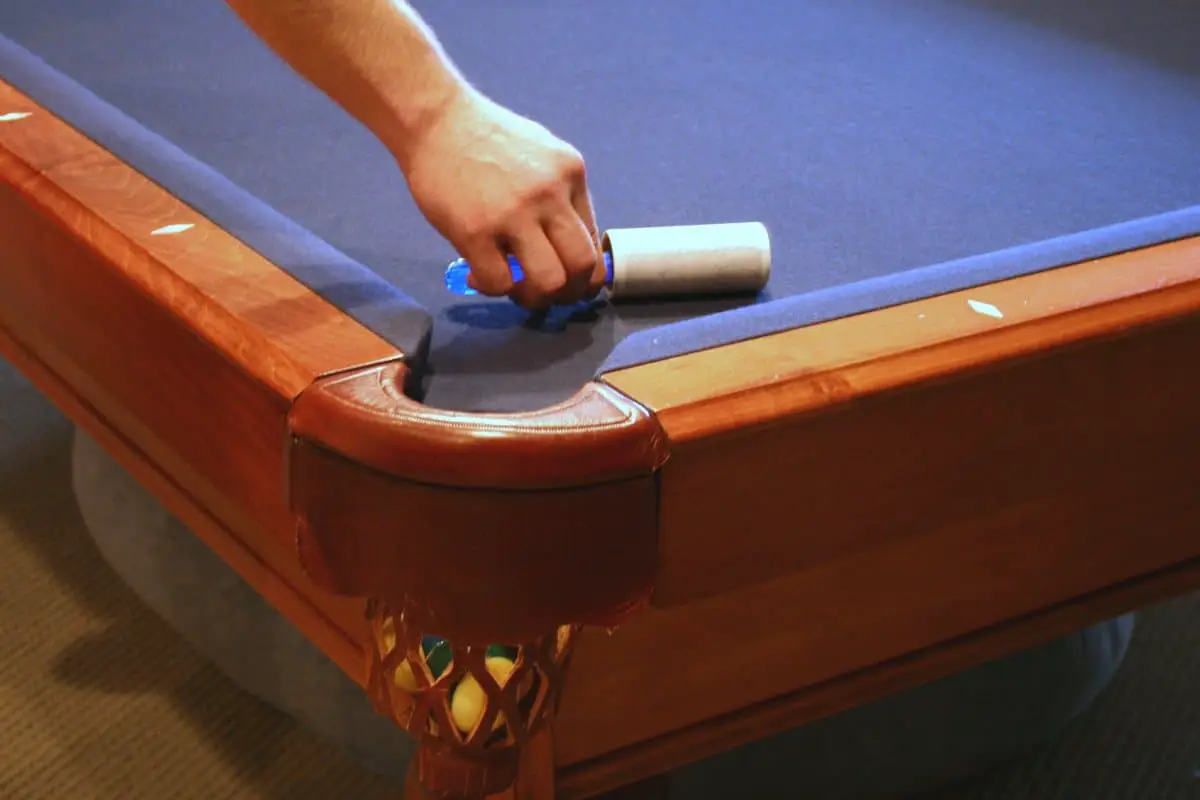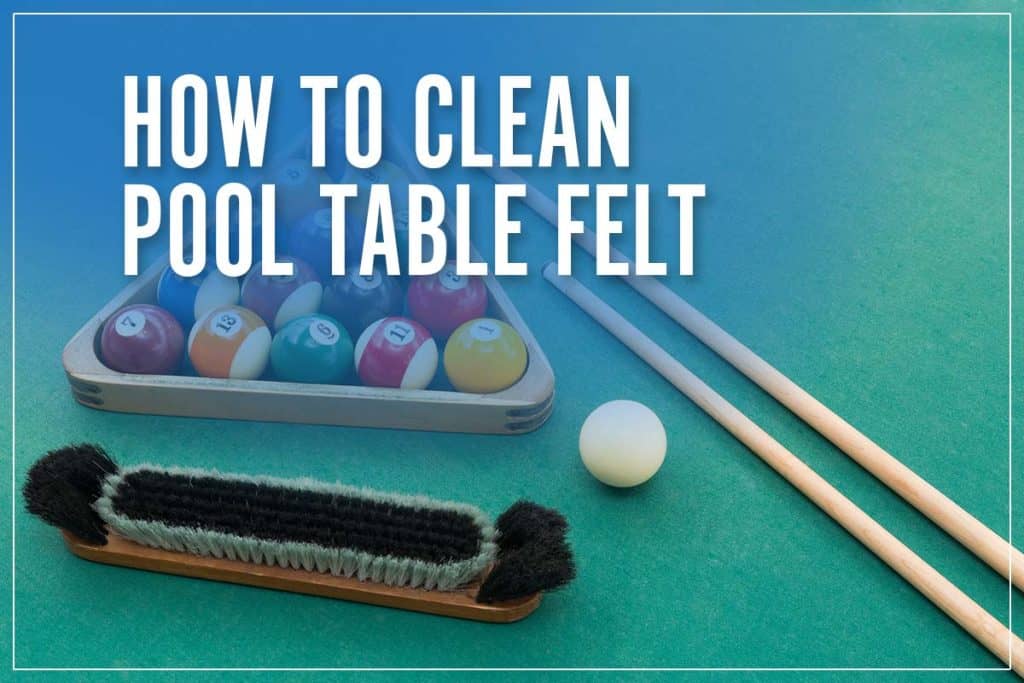How To Clean Your Pool Table Felt: Tips & Tricks + Guide
Is your pool table felt looking a little worse for wear? Keeping your pool table felt clean isn't just about aesthetics; it's about preserving the life and playability of your investment. Neglecting this critical aspect can lead to a frustrating and uneven playing surface, hindering your game and potentially damaging the table itself. This guide will provide you with the expert knowledge and practical advice to ensure your felt remains in top condition, allowing you to enjoy countless hours of flawless gameplay.
The path to a pristine pool table felt surface starts with understanding the materials at play and the tools needed to achieve the best results. From the composition of the felt itself to the cleaning implements, each element plays a crucial role in the cleaning process. The following sections will explore the best practices and common pitfalls to avoid. In this journey, we will guide you through the proper techniques to maintain your pool table felt, including stain removal and the materials that contribute to its durability and performance.
Before diving into the cleaning process, it's important to grasp the basic elements of pool table felt. Pool table felt is usually made from a blend of wool and synthetic fibers, the proportions of which impact its quality and playing characteristics. High-quality felt often boasts a higher wool content. Wool excels when it comes to providing both durability and performance in high-use environments.
The lifespan of your pool table felt also depends on how well you take care of it. By making use of proper cleaning and maintenance, you can ensure that your felt stays in excellent shape for years to come.
| Aspect | Details |
|---|---|
| Felt Composition | Typically a blend of wool and synthetic fibers. Wool provides durability and better playability. |
| Key Benefits of Proper Maintenance | Extending the lifespan, maintaining playability, and enhancing the overall gaming experience. |
| Common Mistakes | Using vacuum cleaners with strong suction, which can damage the felt. |
| Recommended Tools | Soft-bristled pool table brush and white vinegar are recommended. |
| Stain Removal | Effective stain removal, and the best practices to restore your pool table felt to its pristine condition. |
| Fiber Types | The utilization of wool and synthetic fibers, with wool known for its outstanding durability. |
| Longevity | How proper maintenance will enable the user to get the most life out of their pool table felt. |
The first and most crucial step in cleaning your pool table felt is choosing the right tools. One of the most common and damaging mistakes beginners make is reaching for a vacuum cleaner. While vacuum cleaners are excellent for carpets and other surfaces, the powerful suction they generate can be disastrous for pool table felt. The suction can lift and pull the felt fibers, causing them to separate from the underlying slate. This not only ruins the playing surface but can also significantly shorten the life of your pool table.
The ideal tool for cleaning pool table felt is a special pool table brush. These brushes are readily available online and in recreation and hobby stores. They are designed with soft bristles specifically made for felt, which gently lift dust, chalk particles, and other debris without causing damage. A soft-bristled brush will also leave the felt looking clean.
Beyond the brush, other cleaning solutions and supplies that are important for maintaining the surface. White vinegar is a natural cleaner with mild acidity, making it effective at removing stains without damaging the felt. Other recommended cleaning supplies might also include a clean, soft cloth or sponge, and, depending on the stain, possibly specialized felt cleaners.
The process of cleaning your pool table felt is straightforward but requires attention to detail. Begin by using your soft-bristled pool table brush. Starting from the center of the table, brush outwards towards the edges using quick, short strokes. This technique ensures that you capture all of the dust and debris without pushing it further into the felt.
This brushing technique is effective for day-to-day maintenance and prevents dust and chalk from accumulating, preserving the smooth playing surface. After brushing, you can use a damp cloth or sponge to remove any remaining surface debris. For this, you should dampen the cloth or sponge with a bit of water and gently wipe away any remaining particles.
For tougher stains, like spilled drinks or chalk marks, consider using white vinegar. As mentioned, it's an excellent solution for stain removal. Simply mix a small amount of white vinegar with water and gently dab the stained area with a clean cloth or sponge. Avoid saturating the felt, and always test the solution on an inconspicuous area first to ensure that it doesnt discolor the felt.
Stains, a common challenge for pool table owners, require targeted and careful solutions. The type of stain will dictate the cleaning approach. Chalk marks, for example, can be brushed gently with a pool table brush, as described above. Most chalk marks can be removed with gentle brushing alone. Other stains may require different approaches.
Common spills, like soft drinks or alcohol, demand immediate attention. The longer the spill sits, the harder it will be to remove. First, blot up as much of the liquid as possible with a clean cloth. Then, gently dab the area with a solution of white vinegar and water. Avoid scrubbing, which can damage the felt. Repeat until the stain lifts, and then allow the area to dry completely.
For more challenging stains, such as ink or grease, it's essential to proceed with caution. Ink stains may require a specialized felt cleaner, available at most pool supply stores. Follow the product's instructions carefully, and always test it in an inconspicuous area first. Grease stains can sometimes be treated with a mild detergent and water solution. Once again, test the solution and always blot, never scrub.
A well-maintained pool table can provide enjoyment for many years, and cleaning your felt is a small investment of time that leads to a significant return in both playability and the table's lifespan. Regular cleaning and maintenance protect your pool table and also enhances the overall gaming experience.
Avoid vacuum cleaners. Vacuum cleaners are convenient for cleaning carpets, but their powerful suction can lift the felt fibers, potentially causing them to separate from the slate. This damage can ruin the playing surface.
Instead, use a pool table brush. Find a pool table brush online or at a recreation store. They are designed to safely remove dirt and chalk particles without harming the felt. These are soft-bristled brushes specifically made for this job.
Brush the table correctly. Begin at the center and brush outwards toward the edges using swift, short strokes. This method ensures the capture of all debris and prevents its compaction into the felt.
Use the right products. White vinegar is an effective, natural cleaner for stains. Mix a small amount with water. If using other cleaners, test them in a hidden area first.
Clean spills immediately. Prompt attention minimizes the stain's impact. Gently blot spills with a clean cloth, and then carefully dab the area with white vinegar solution, repeating as necessary.
When dealing with any stain, act quickly and gently. Always prioritize the preservation of the felt over aggressive cleaning techniques. If a particular stain is resistant to home remedies, it might be best to consult a professional pool table cleaner. Regular maintenance and care will allow your table to stand the test of time.
The choice of felt material is essential to the table's performance and the user's enjoyment. Typically, pool table felt is composed of either wool or a blend of wool and synthetic fibers. Wool is highly regarded for its durability and playability, as well as its ability to stand up to heavy use.
Synthetic fibers are often mixed with wool to improve the felt's stain resistance and overall cost. Regardless of the fiber blend, the quality of the felt will significantly impact the playing experience. The durability of the felt also influences the frequency with which it needs to be cleaned. Higher-quality felt can often withstand more wear and tear, making it more cost-effective in the long run.
By following the best practices of cleaning and maintenance detailed above, you can ensure your pool table felt remains in top condition. These techniques not only enhance the look and feel of your table but also promote its longevity. Proper care ensures that you enjoy a flawless gaming experience.



Detail Author:
- Name : Grayson Flatley
- Email : kroberts@oreilly.com
- Birthdate : 2006-12-26
- Address : 741 Claudine Isle Apt. 294 Breitenbergtown, WY 00126-5496
- Phone : 1-534-325-3403
- Company : Swaniawski LLC
- Job : Stone Cutter
- Bio : Minima quasi dolore sapiente culpa. Commodi dolorem ut quos atque doloribus. Aut cumque qui corporis rem magni. Quia aut id illo veniam. Pariatur natus non porro aut.